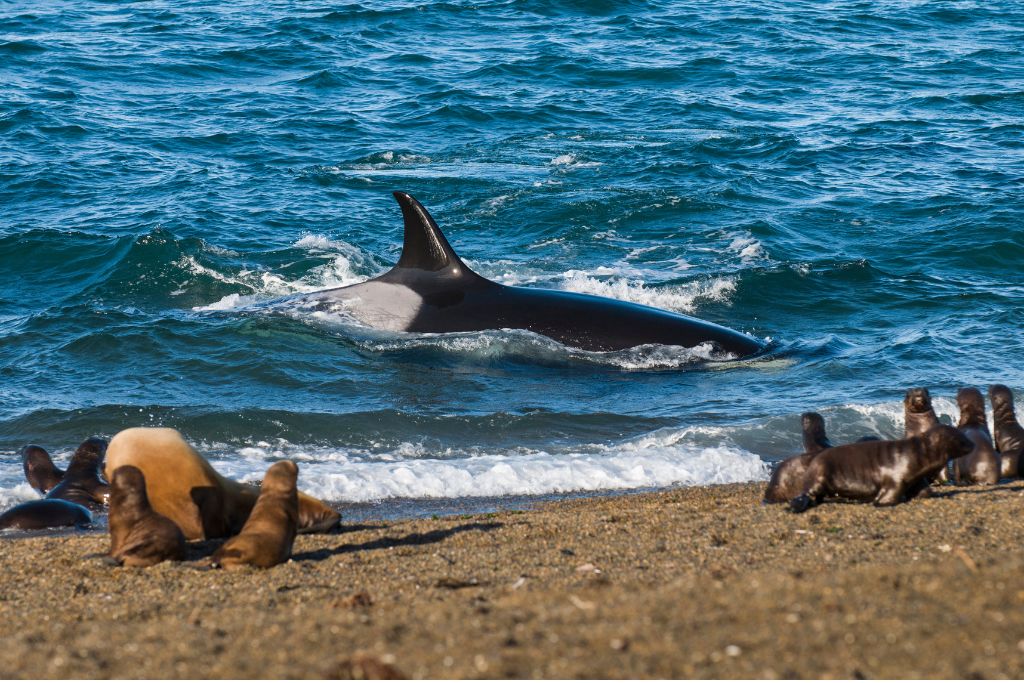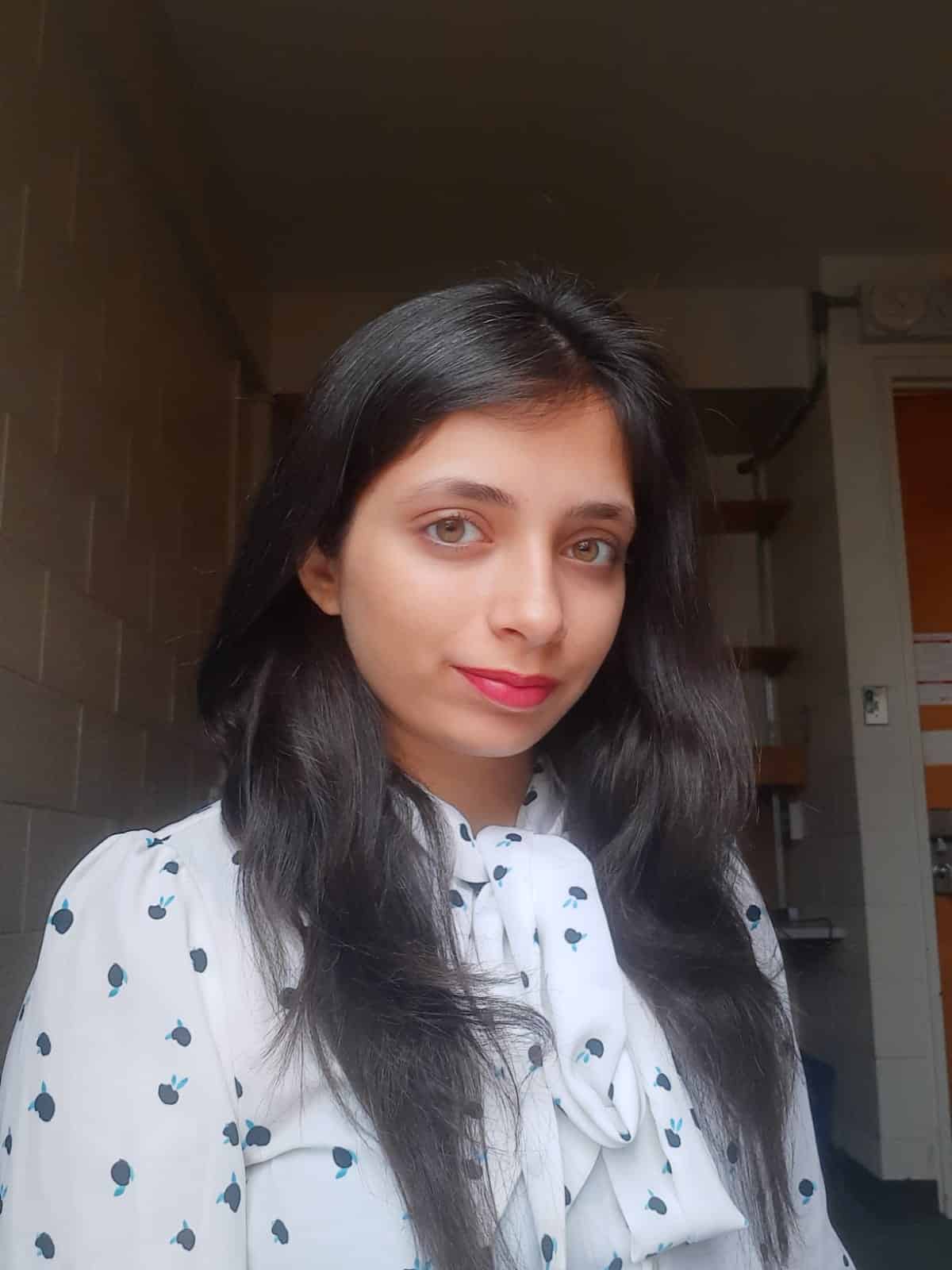Orca calves in the Valdes Peninsula, Argentina, and the Crozet archipelago in the Indian Ocean have learned the intentional stranding hunting technique through the physical and biological dynamics of their pod, the reason for which we often refer to them as killer whales. The rarity of orca beachings, the passing down of this trait from one generation to the other, and its association with mass cetacean strandings and orca speciation can be explained by this wondrous phenomenon.
–
Aptly referred to as the “wolves of the sea,” orcas are apex predators with highly specialised predation techniques that are cascadingly linked to the fluctuation of prey populations and the intricacies of their ecosystem. While most feed on fish and squid, some pods have been known to attack even dolphins and adult whales, giving them their often-misunderstood name: killer whales.
Orcas are social animals, with populations composed of matriarchal pods. Being a cosmopolitan species, they can be found in all of the world’s oceans and a variety of marine ecosystems. Their preeminence in the aquatic food chain can be attributed to their highly sophisticated and refined hunting strategies. However, like most animal species, orcas have adapted themselves to their environmental specifications, and these adaptations are passed across generations. One such manifestation of this animal culture is the development of the intentional stranding hunting technique in select pods of orcas in the southern Indian and Atlantic Oceans.
Killer whales in the Valdes Peninsula, Argentina, and the Crozet Islands in the Indian Ocean are famous for intentionally stranding themselves in their pursuit of seals and sea lions. The pursuing whales exploit the thrust of the waves, supplemented by their own momentum, to lunge at perplexed seals sunbathing on the gravel beaches. They then thrash their bodies and wait for the next wave to carry them back into deeper waters.

While most feed on fish and squid, some pods have been known to attack even dolphins and adult whales, giving them their often-misunderstood name: killer whales.
This behaviour was first observed in the 1970s in Argentina, and then hundreds of times more within the same pod, suggesting the passing down of an “intellectual heirloom” from one generation of orcas to the other. It is this fact that, perhaps, begs the question: How do orca calves develop the intentional stranding hunting technique?
Three significant factors contribute towards the development of the intentional stranding hunting technique in killer whale calves: high parental investment in the teaching-learning process, low reproduction rates among the Crozet Islands and Valdes Peninsula females as compared to those in other locations, and the social transfer of skills through alloparental apprenticeship. This peculiar hunting strategy has an intriguing implication. Killer whales appear to be splitting up into several species because of the vast cultural and strategic differences between populations. As orcas speciate, their ability to reproduce becomes restricted to their own kind, thereby suggesting a possible threat to their numbers in the future. Studying characteristic orca behaviour like intentional stranding can help scientists assess the potency of this threat and make planned and targeted conservation efforts if a future need arises.
It comes as no surprise that the calf’s mastery of this potentially life-threatening technique requires high time and energy investment by the mother to reduce the associated risk. At the Crozet Archipelago, juvenile orcas first independently experimented with intentional stranding at the age of four or five; however, even six-year-old juveniles depended on their mothers to return to the deep water with their prey.
Often, calves accidentally beach themselves ashore and struggle under their body weight. Their mothers would then have to accelerate towards the beach, turn abruptly, and produce an artificial wave massive enough to lift the calf, who then managed to swim back into deeper waters. Orca mothers frequently assist the calves in launching the attack as well, thereby, teaching by example. When a calf pounces at unsuspecting seals, its mother gives it a push with her rostrum towards the prey, positioning herself between the beach and her calf to prevent it from going too far ashore. She then pushes the calf and its prey back to the ocean with the front part of her body. Thus, the mother’s investment in assisting her calf through possibly fatal hunting techniques enhances the calf’s survival by reducing the risks associated with predation.
While killer whales in the wild breed every three to ten years, the Crozet Islands and Valdes Peninsula orcas have much longer time gaps between offsprings. This unusually low fertility rate allows the mothers to devote more time and energy to the physical development and hunting apprenticeship of their calves. For instance, seven-year-old juveniles near the Possession Island of the Crozet archipelago were still closely associated with their mother, while in the North Pacific, calves started distancing themselves from their mothers beyond three years of age. A similar trend was observed in the Argentinian orcas. Thus, low offspring production is directly linked to high investment in the skill development of the calves, especially with regard to the intentional stranding technique.
It is not solely the mother that facilitates the development of the skill of intentional stranding in young juveniles. Orcas live in matrilineal pods, with all females living in close kinship and contributing to the upbringing of the calves, whether it be through social play or alloparental teaching. Through social beaching play, adult females teach calves socialisation and innovation to refine their hunting tactics. Through intimate contact, interaction, and emulation of the predation behaviour of its mother or other relatives who have perfected specific skills, the calf learns essential hunting strategies. This information transfer, social learning, and alloparental behaviour patterns not only benefit the calves, but also significantly improve the predation success rate of the pod. Thus, apprenticeship and social play with other females play an essential role in the transmission of predation strategies from one generation to the next.
The Future of Species Adaptation
The development of adaptation skills in any species is an evolutionary process spanning millions of years and decades of research. A few interesting questions, that deserve to be answered, also arise. What prompted the need for such a behavioural adaptation in the Crozet Islands and Valdes Peninsula orcas? How does the hunting strategy affect the native ecosystem, the food chain, and the orcas themselves? What other unique hunting strategies do animals in the wild possess? Are they somehow related to the intentional stranding technique of the orcas?
Perhaps, having answers to such questions would help us comprehend the intricacy of ecological balance in nature, how human intervention affects it, and what can be done to safeguard it.
You might also like: How Top Predator Decline Is Altering South Africa’s Marine Ecosystem


















